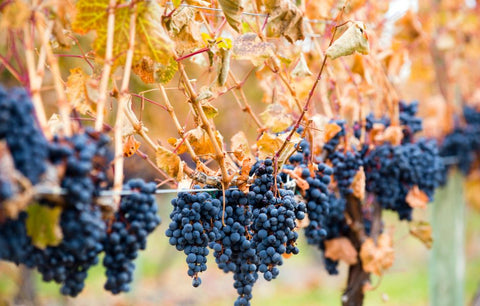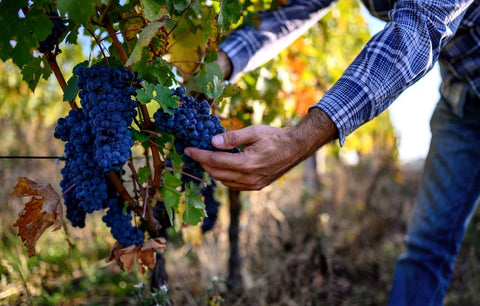Few wines embody the spirit of Australian winemaking quite like Shiraz. This remarkable varietal has become synonymous with the country's wine identity, producing expressions that range from elegant and restrained to bold and powerful. Understanding Shiraz opens the door to appreciating not just a grape variety, but a winemaking philosophy that celebrates both tradition and innovation, terroir and craftsmanship.
Shiraz represents more than Australia's most planted red wine variety—it embodies the pioneering heritage that defines Australian viticulture. From the historic vineyards of the Barossa Valley to the elevated slopes of Eden Valley, Shiraz adapts remarkably to diverse terroir whilst maintaining its distinctive character. This versatility has made it the foundation of countless exceptional wines, earning international acclaim and establishing Australia as one of the world's premier Shiraz producers.
The journey of discovering Shiraz encompasses understanding its origins, appreciating regional expressions, and recognising the craftsmanship that transforms grapes into wine. Whether exploring your first bottle or deepening existing appreciation, Millon's carefully curated Shiraz collection offers exceptional examples that showcase the varietal's remarkable range and Australia's winemaking expertise.
Origins and Heritage: From France to Australia
Shiraz, known as Syrah in its birthplace, originates from the Rhône Valley of southeastern France, where DNA analysis has confirmed its heritage spanning over 5,000 years. While romantic legends tell of Crusading knights bringing the grape from Persia, scientific evidence reveals Shiraz as native to French soil, where it achieved prominence during the 18th century.
The distinction between Shiraz and Syrah reflects more than geographical preference—it represents fundamentally different winemaking philosophies. Old World French Syrah emphasises restraint, earthiness, and the subtle expression of terroir. New World Shiraz, particularly Australian expressions, celebrates fruit character, accessibility, and the harmonious integration of power with elegance.

Australia's relationship with Shiraz began in the early 19th century, but it wasn't until the late 20th century that the variety truly found its voice in Australian terroir. The warm, dry climate across much of Australia's wine regions allows Shiraz grapes to achieve full phenolic ripeness whilst retaining sufficient acidity for balance—a combination that creates wines of remarkable depth and aging potential.
This climatic affinity has made Shiraz Australia's most successful red wine export, with expressions ranging from everyday drinking wines to premium selections that compete with the world's finest reds. The grape's adaptability to different Australian regions creates a spectrum of styles, each reflecting its specific terroir whilst maintaining the bold, fruit-forward character that defines Australian Shiraz.
Understanding this heritage provides context for appreciating modern Australian Shiraz, where tradition meets innovation to create wines that honour the grape's origins whilst expressing the unique character of Australian terroir.
Understanding Australian Shiraz Regions
Australia's diverse wine regions produce distinctly different expressions of Shiraz, each shaped by unique combinations of climate, soil, and elevation. This regional diversity creates opportunities for wine enthusiasts to explore various interpretations within a single varietal.
Barossa Valley: The Flagship Region
The Barossa Valley stands as Australia's premier Shiraz region, home to some of the world's oldest Shiraz vines and most celebrated producers. The warm, dry climate produces Shiraz wines with exceptional richness, full body, and concentrated dark fruit flavours. Barossa Shiraz typically displays generous blackberry and plum characteristics, complemented by spice, chocolate, and vanilla notes from careful oak integration.
The region's terra rossa soils and consistent climate create ideal conditions for producing powerful yet balanced wines. Millon's Masterpiece Shiraz exemplifies this style, showcasing the region's ability to produce wines of remarkable concentration and aging potential.
Eden Valley: Elevated Elegance
Located within the greater Barossa region, Eden Valley's higher elevation creates a significantly cooler climate that produces more elegant, refined Shiraz expressions. These wines display greater structural finesse, with silkier tannins, enhanced minerality, and a more restrained fruit profile that emphasises complexity over power.
Eden Valley Shiraz often shows distinctive pepper and spice characteristics, with red fruit notes complementing darker berry flavours. The longer growing season allows for gradual ripening and enhanced flavour development, creating wines with remarkable balance and aging potential.

Clare Valley: Structured Complexity
The Clare Valley benefits from pronounced diurnal temperature variation—hot days followed by cool nights—which promotes excellent flavour development whilst retaining natural acidity. Clare Valley Shiraz displays structural integrity combined with complex flavour profiles, often showing earthy, mineral characteristics alongside dark fruit expression.
These wines typically require time to fully develop, rewarding patience with increasing complexity and integration. The region's limestone soils contribute distinctive minerality that sets Clare Valley Shiraz apart from other Australian expressions.
Hunter Valley: Historic Tradition
As Australia's oldest wine region, the Hunter Valley produces Shiraz with a distinctive regional character shaped by its unique climate and winemaking heritage. The region's moderate temperatures and clay soils create medium-bodied wines with savoury, earthy characteristics that distinguish them from fruit-driven styles found elsewhere.
Hunter Valley Shiraz often displays leather, tobacco, and earthy notes alongside red fruit flavours, creating complex wines that pair exceptionally well with food. These wines represent a more European approach to Shiraz winemaking, emphasising terroir expression over varietal character.
McLaren Vale: Coastal Influence
McLaren Vale's proximity to the ocean creates a maritime climate that moderates temperatures and extends the growing season. This coastal influence produces full-bodied Shiraz wines with rich fruit flavours balanced by distinctive chocolate and mocha notes. The region's diverse soils, from sand to clay to limestone, create additional complexity within individual vineyards.
Yarra Valley: Cool Climate Expression
The Yarra Valley's cool climate produces Shiraz wines often labelled as Syrah, acknowledging their stylistic similarity to French expressions. These wines display a medium body, elegant tannin structure, and complex aromatics that develop beautifully with age. The longer ripening period allows for enhanced flavour development whilst maintaining natural acidity.
Shiraz Flavour Profiles and Wine Characteristics
Understanding Shiraz characteristics across visual, aromatic, and textural elements provides the foundation for proper appreciation and service. These qualities vary significantly based on regional origin, winemaking techniques, and vine age.
Visual Characteristics
Well-made young Shiraz typically displays deep ruby to purple-red colours that indicate concentration and quality. As wines age, these colours evolve toward garnet and brick-red hues, with older wines showing orange-brown rim variations. Colour intensity often correlates with flavour concentration, though winemaking techniques and regional variations can influence this relationship.
The wine's clarity should be brilliant, with any cloudiness potentially indicating faults, though some artisan producers intentionally retain minimal filtration for enhanced texture and complexity.
Aromatic Complexity
Shiraz aromatics encompass a remarkable range depending on regional origin and winemaking approach. Primary fruit aromas include blackberry, plum, blueberry, and dark cherry, often accompanied by the distinctive white pepper spice that characterises quality Shiraz. Secondary aromas from winemaking processes may include vanilla, chocolate, coffee, and toasty oak notes.
Tertiary development through aging introduces leather, tobacco, dried herbs, and earthy characteristics that add sophistication and complexity. Cool-climate expressions often emphasise spice and savoury elements, whilst warm-climate wines showcase generous fruit character enhanced by oak integration.

Palate Structure and Texture
Warm-climate Shiraz from regions like Barossa Valley typically displays full body, rich texture, and substantial tannin structure that provides aging potential. These wines often show higher alcohol levels balanced by concentrated fruit flavours and well-integrated oak character.
Cool-climate expressions present a medium body with more refined tannin structure, enhanced acidity, and savoury complexity that makes them particularly food-friendly. The textural differences between regions provide opportunities for matching wines to specific occasions and food pairings.
Quality Shiraz displays balance between all structural elements—fruit, acidity, tannin, and alcohol—creating harmonious wines that improve with proper cellaring. Millon's Reserve Shiraz selections exemplify this balance, showcasing how careful winemaking enhances natural grape characteristics.
Food Pairing and Service Excellence
Shiraz's bold character and versatile structure make it exceptionally food-friendly, complementing diverse cuisines and cooking methods. Understanding optimal food pairing principles maximises both wine and dining enjoyment.
Classic Pairings
Shiraz excels alongside grilled and roasted meats, where the wine's tannin structure complements protein richness whilst fruit character balances savoury flavours. Lamb represents the classic pairing, particularly when prepared with herbs and spices that echo the wine's natural pepper and spice notes. Beef steaks, whether grilled or roasted, create excellent partnerships that highlight both wine and food complexity.
Game meats like venison, duck, and wild boar pair beautifully with full-bodied Shiraz expressions, where the wine's power matches the rich, intense flavours of game preparation. The wine's earthy characteristics complement the natural gaminess whilst providing balance through fruit sweetness.
Contemporary Applications
Modern cuisine offers expanded pairing opportunities for Shiraz. Barbecue preparations, with their smoky, caramelised flavours, find perfect partnership with Australian Shiraz. The wine's bold character stands up to complex barbecue sauces whilst its fruit character provides counterpoint to smoky richness.
International cuisines featuring bold spices—Indian curries, Middle Eastern preparations, Mexican dishes—create compelling pairings where Shiraz's spice notes complement rather than compete with complex seasoning. The wine's fruit character provides cooling relief whilst maintaining flavour intensity.
Service Excellence
Proper service enhances Shiraz appreciation significantly. Serve at optimal temperature—16-18°C—to balance aromatic expression with structural elements. Understanding proper wine temperatures ensures consistent results with every bottle.
Young, structured Shiraz wines often benefit from decanting or aeration, allowing harsh tannins to soften whilst permitting complex aromatics to develop fully. Allow 30-60 minutes breathing time for optimal results, adjusting based on wine age and structure.
Cellaring and Storage Expertise
Quality Shiraz possesses excellent aging potential, with premium examples developing remarkable complexity over 5-20 years or more. Understanding proper cellaring techniques ensures wines reach their full potential whilst maintaining quality throughout their development.
Storage Conditions
Maintain consistent temperatures between 12-14°C with humidity levels around 50% to prevent cork drying whilst avoiding mould development. Store bottles horizontally to keep corks moist, and protect from light and vibration that can accelerate aging and create off-flavours.
Aging Potential Assessment
Evaluate wines for cellaring potential based on tannin structure, acidity levels, and overall balance. Wines with firm tannins, good acidity, and concentrated flavours typically age most successfully. Regional styles influence aging curves—Barossa Valley wines often peak at 8-15 years, whilst Eden Valley expressions may develop more slowly over 10-20 years.
Collection Development
Building a Shiraz collection benefits from regional diversity, allowing exploration of different styles and aging characteristics. Include both accessible young wines for immediate enjoyment and structured selections for long-term cellaring. Millon's Estate Shiraz offers excellent aging potential whilst remaining approachable for current consumption.
Monitor stored wines periodically, noting development patterns and optimal drinking windows. This experience builds knowledge for future cellaring decisions and enhances appreciation for how great Shiraz develops complexity through proper aging.
The journey of discovering Shiraz extends far beyond simple consumption—it encompasses understanding terroir, recognising craftsmanship, and appreciating the remarkable diversity possible within a single varietal. Through Millon's comprehensive Shiraz collection, wine enthusiasts can explore the full spectrum of Australian Shiraz excellence, from approachable everyday selections to complex, age-worthy wines that showcase the pinnacle of Australian red winemaking.




